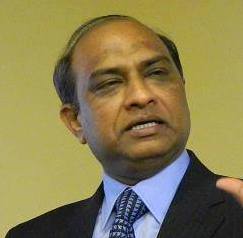Dushyant Yadav
 There is no such thing as an anti-caste enforcer, and this is a write-up about it. Hushed under the rumbling of the wheels, the chugging of the engine, the hissing and screeching of the breaks and the blaring of the horn, the monster of caste becomes impotent when locked inside the bogie of a train. For, how much the caste of your co-passenger bothers you? Do you even ask for it? Do you even care if the cook-on-wheels is a Dalit or a brahmin? No, you don’t. Casteism is, therefore, behavioural and spatially conditioned. It exists inside a temple but is in abeyance on a rail aisle.
There is no such thing as an anti-caste enforcer, and this is a write-up about it. Hushed under the rumbling of the wheels, the chugging of the engine, the hissing and screeching of the breaks and the blaring of the horn, the monster of caste becomes impotent when locked inside the bogie of a train. For, how much the caste of your co-passenger bothers you? Do you even ask for it? Do you even care if the cook-on-wheels is a Dalit or a brahmin? No, you don’t. Casteism is, therefore, behavioural and spatially conditioned. It exists inside a temple but is in abeyance on a rail aisle.
The egalitarian eccentricity of the railways is as old as the tracks themselves. The Indian National Congress used railways as an integrationist during the freedom struggle. Arup K Chatterjee in ‘The Purveyors of Destiny: A Cultural Biography of Indian Railways’ writes, “The Indian National Congress used the railways as the umbrella to connect members from the “Indian intelligentsia and ascendant professional classes across the subcontinent.” Notwithstanding the affluent status of many of these members in their respective communities, it took only a journey by train to remind them of the hostile treatment meted out to train-travelling Indians by the colonial administration and European passengers, as though they were second— or third—class citizens in their own country”. Post-independence, too, the railways functioned as the harbinger of nation-building. Defying the Radcliffe Line, railroads lugged people across during partition. In the following decades, the railways made horizontal growth, aiding the country thrive vertically. But then in 2014, the Bogieman comes aboard.
As children, we were all fascinated by trains; and we were all apprehensive of the Bogieman. When Narendra Modi took over the baton in 2014, railways were put in jeopardy by the Bogieman inside him. Railways, which is essentially subaltern, primarily hoist—from workforce to commuters—the oppressed caste groups. The Modi government is tacitly pushing for an about-face shift in this integral character of the railways. The installation of Water Dispensing Machines stimulated this change, incurring a charge on the very basic amenity—clean drinking water. This is in metaphorical conformity with Vedic practice of shunning Shudras from clean drinking water. Next in line was the auctioning of several railway junctions to private firms for redevelopment. The latest addition is the government’s plan to tender operations of premium trains—Rajdhani, Shatabdi etc—to private businesses.
The private undertaking of railways not only affects the enterprise per se but also shifts the social, economic and political equilibrium. ‘The Bosses’ will first crater workplace diversity, secluding the marginalised groups from recruitments. Empirical data shows the under-representation of these groups in government jobs, and even abysmally low in upper rungs and private sectors where reservation policy is inapplicable. The fare hike to follow will give cold shoulder to this group, who’s ownership on national wealth is abnormally disproportionate—10% upper caste households control 60% wealth of the country. Further, under private umbrellas, the ‘rail roko aandolans’ won’t remain a persuasive State-barter anymore.
The Bogieman, in the facade of the likes of Bullet Train, is beguiling the oppressed groups and catering to the needs of the ruling upper caste elites. Once, a man was thrown out of a first-class carriage in Pietermaritzburg and it cued the Indian Freedom Struggle. Today, the 85% population of the country is being ousted from the railway platforms. Could this spark a revolution is a mystery as big as the Bogieman itself!
~~~
Dushyant Yadav is a staunch Phuleite, Ambedkarite, and Periyarite, dedicated to Social Justice.










